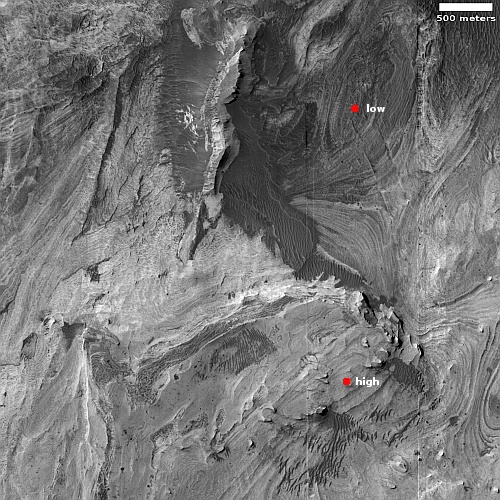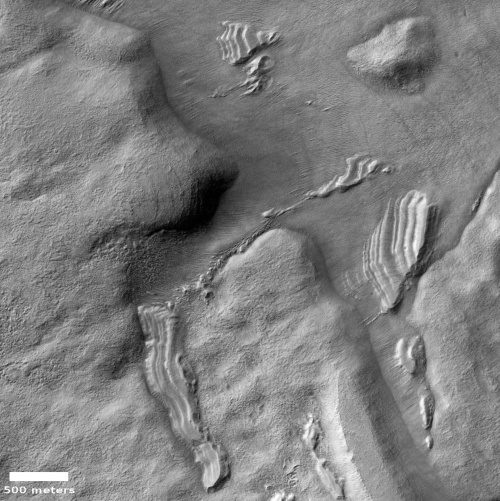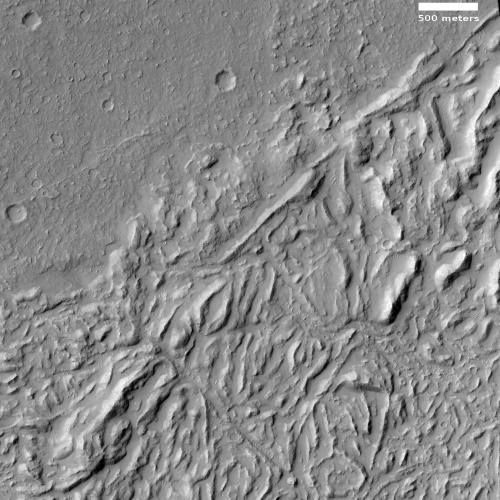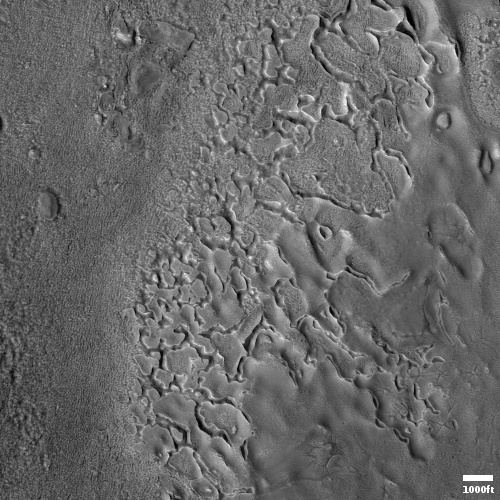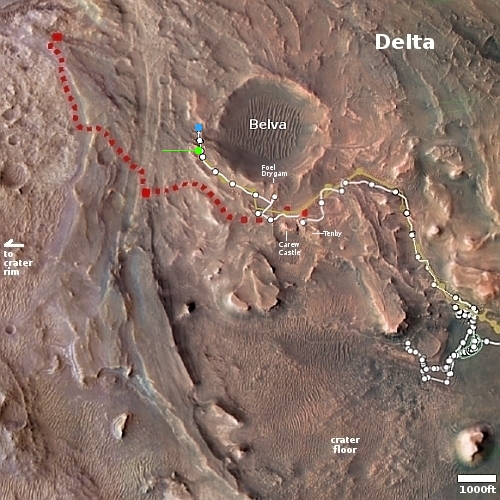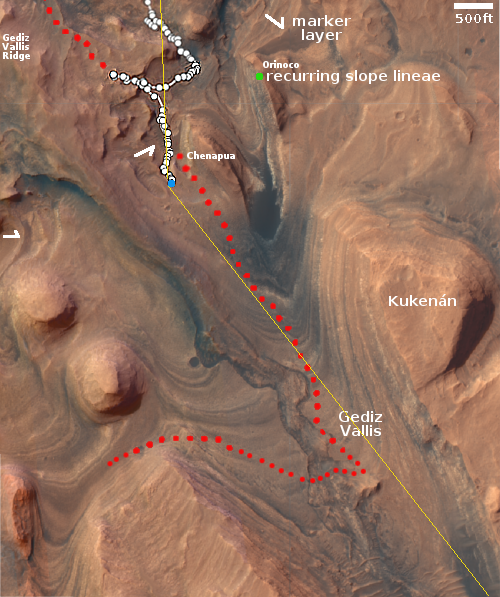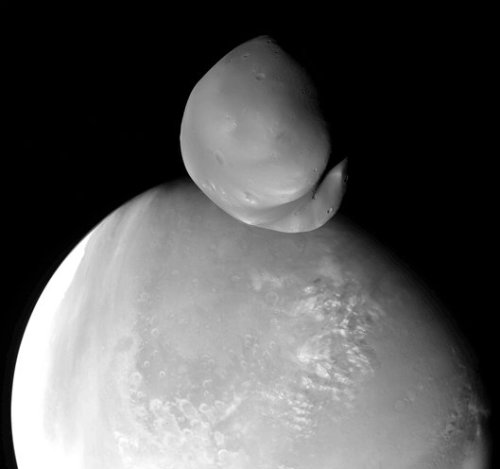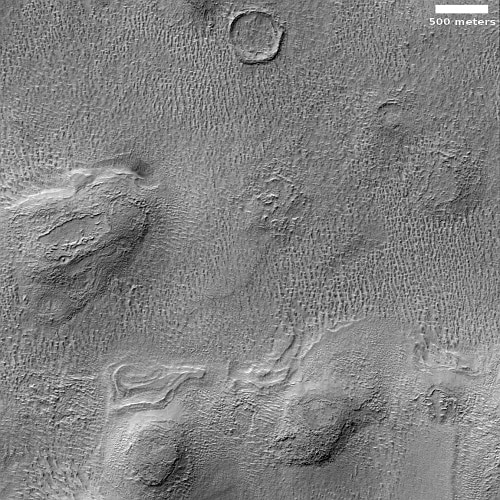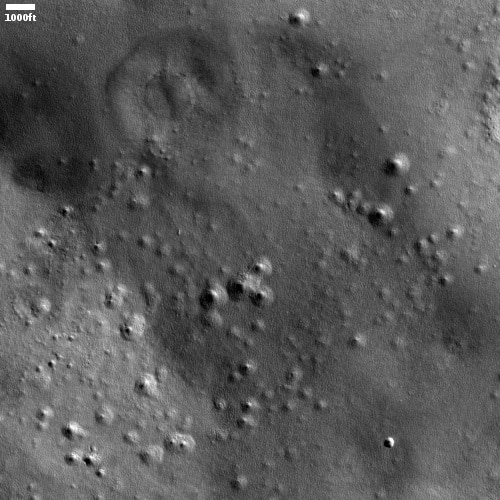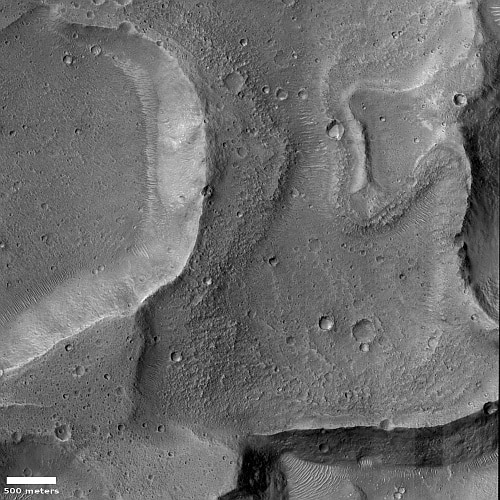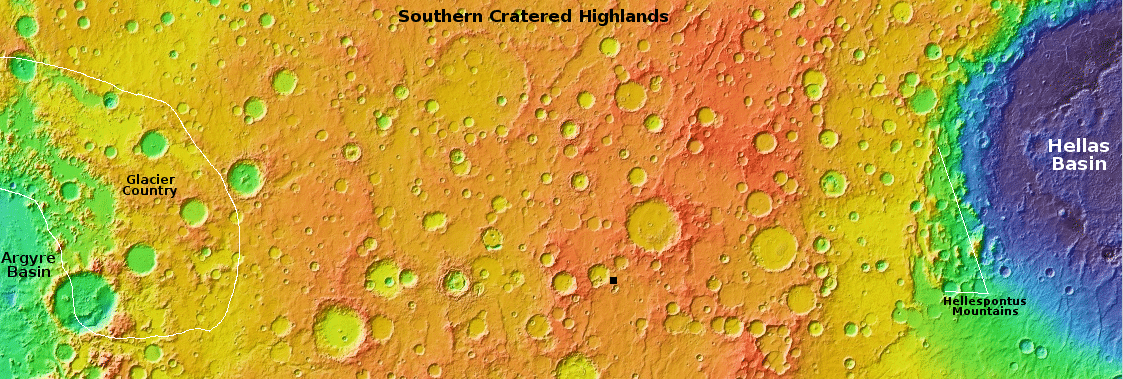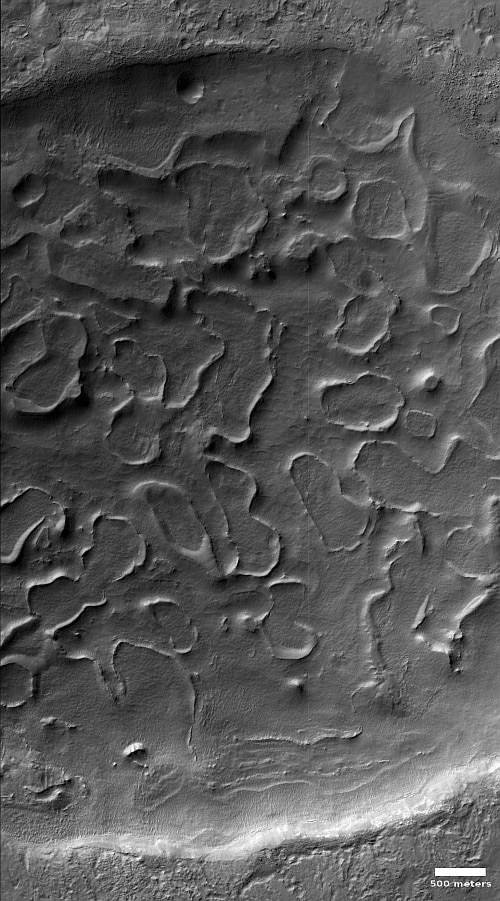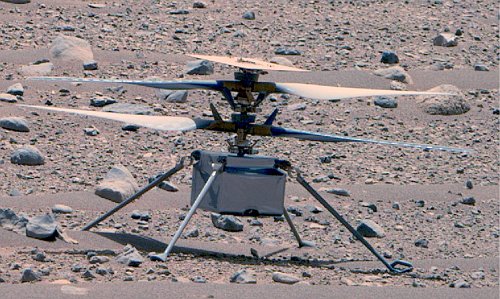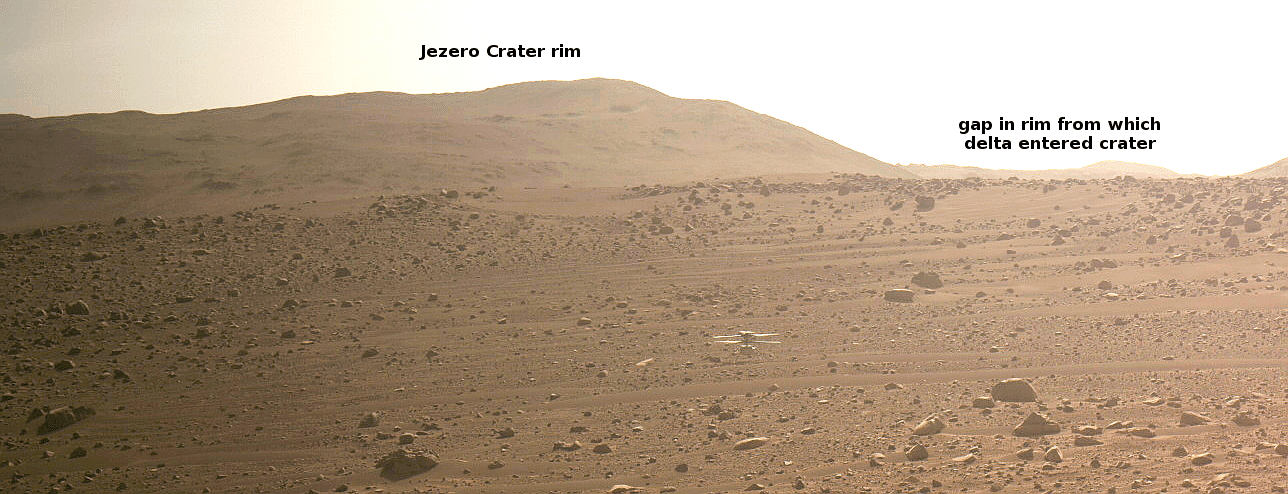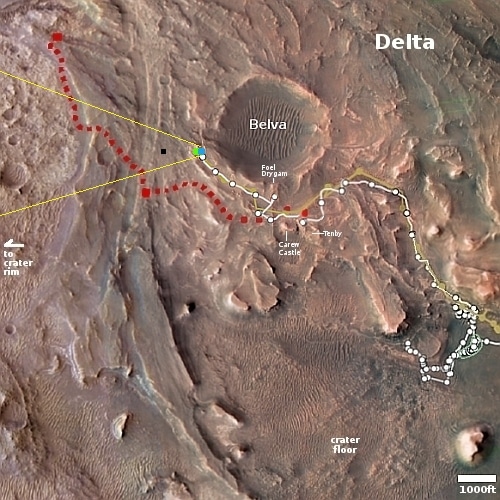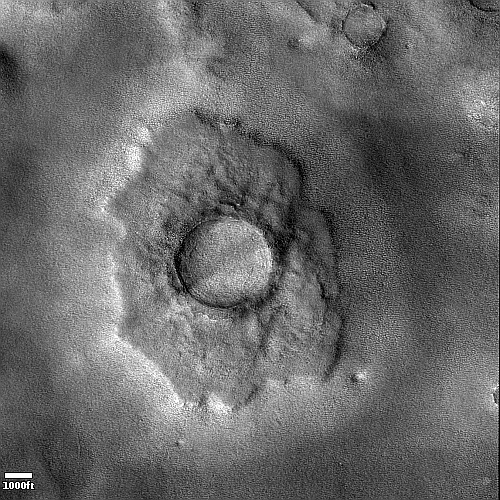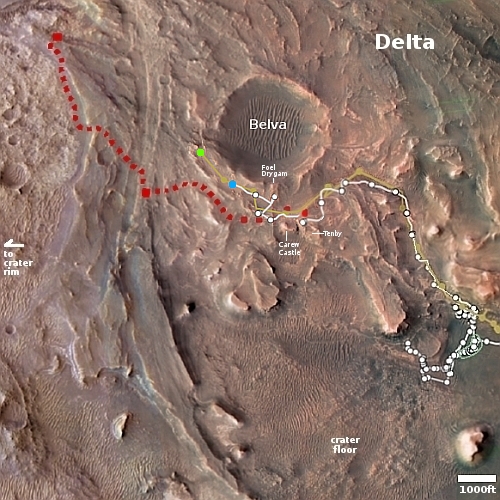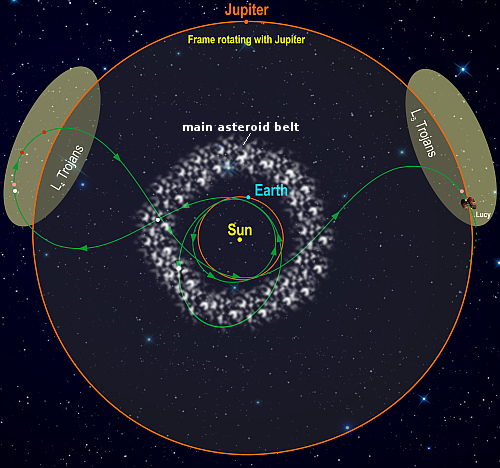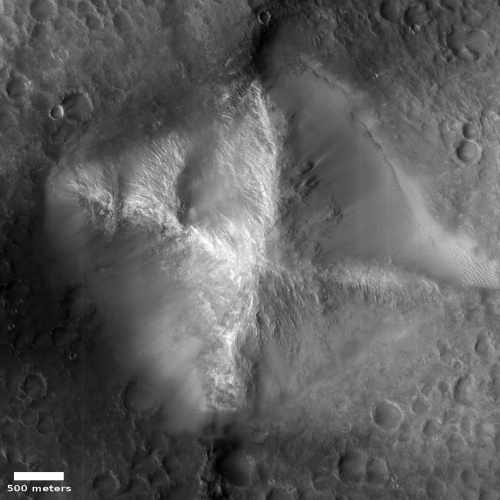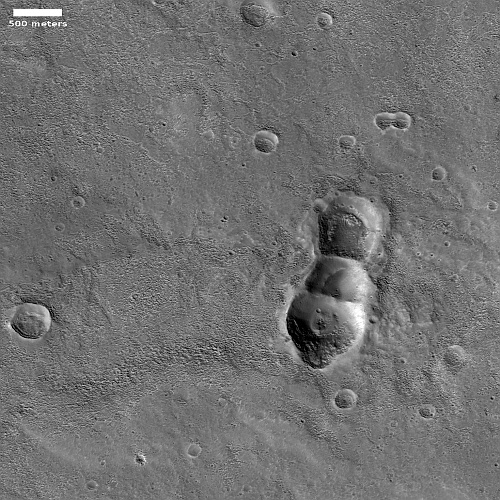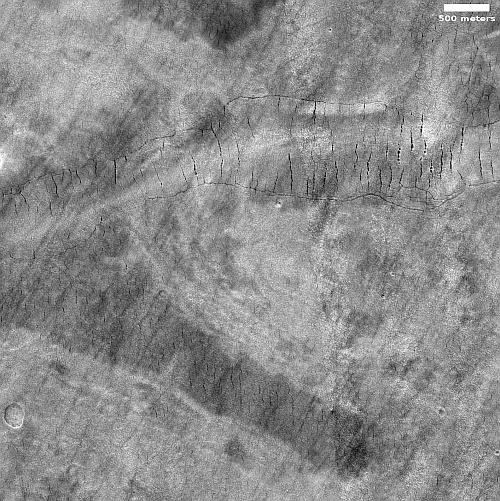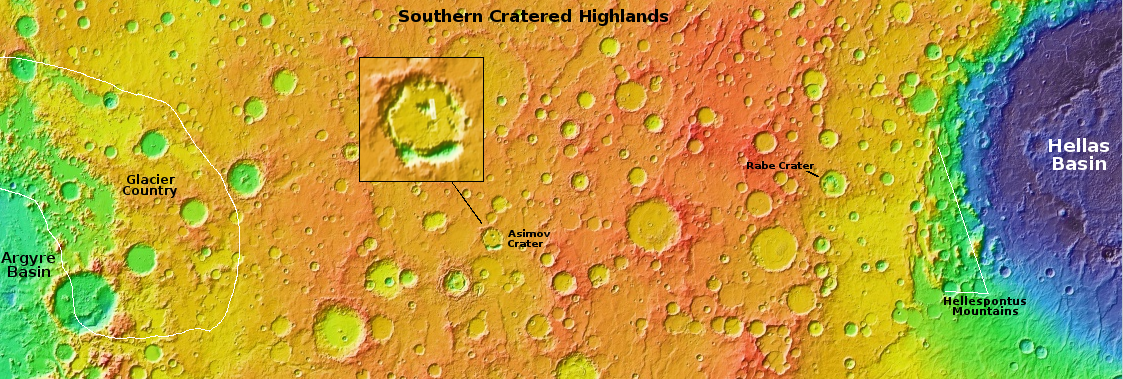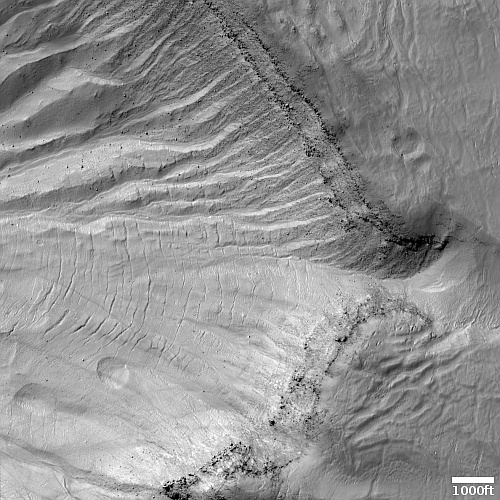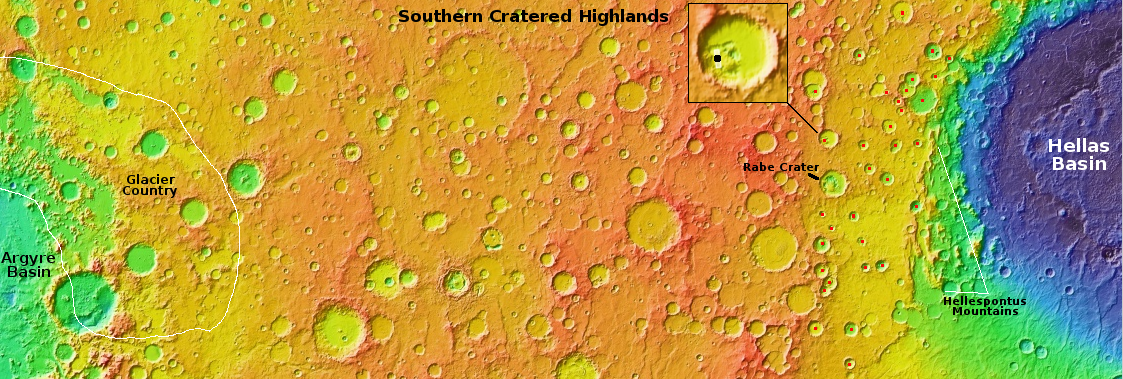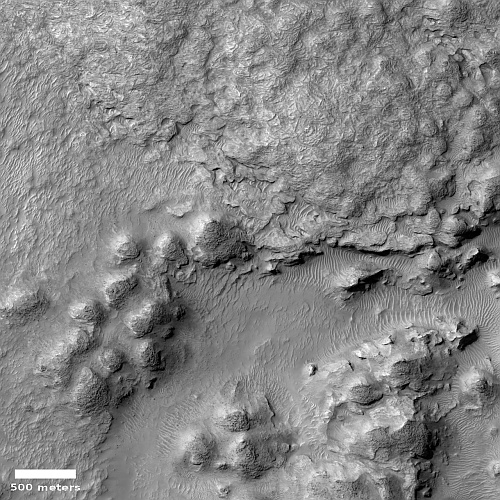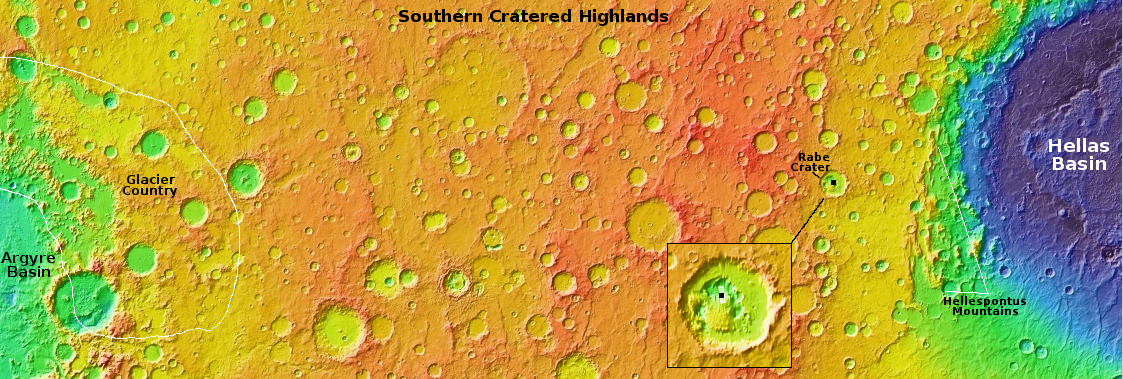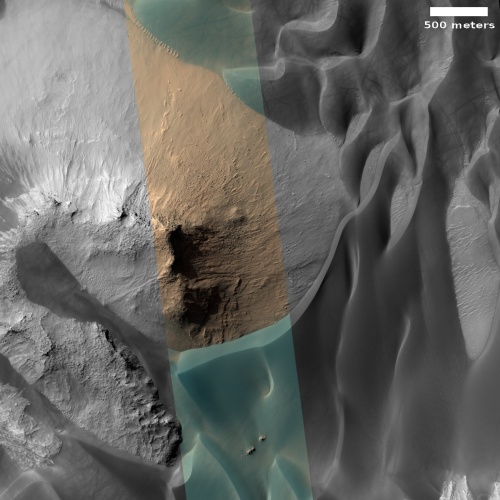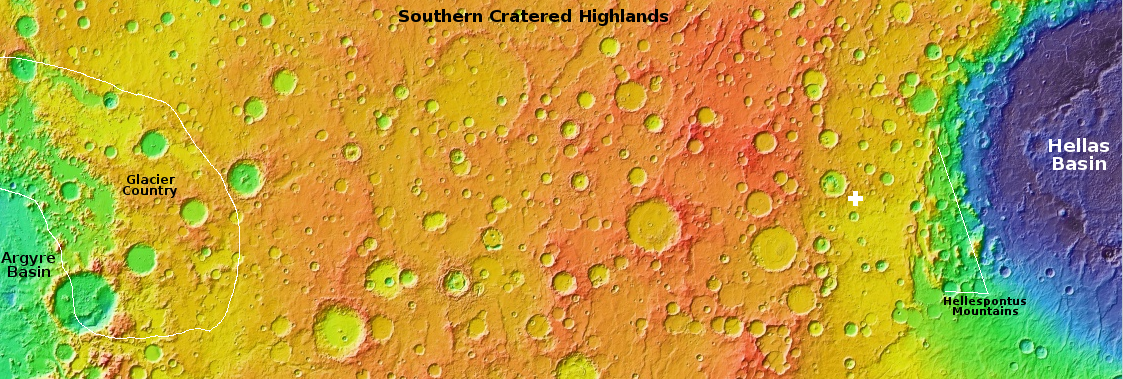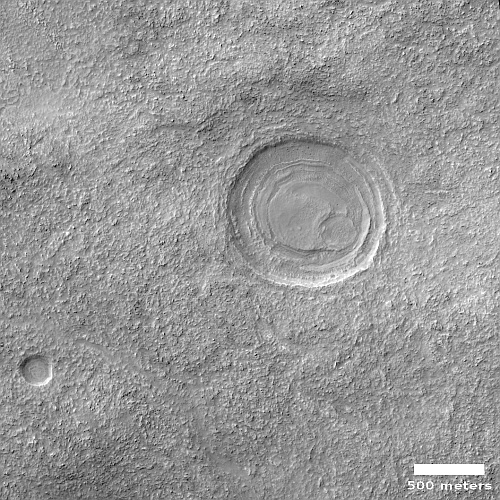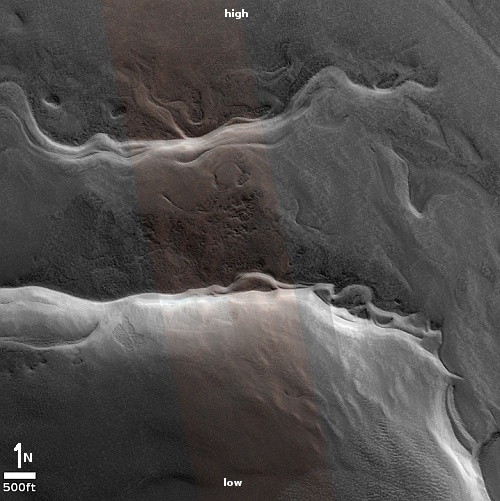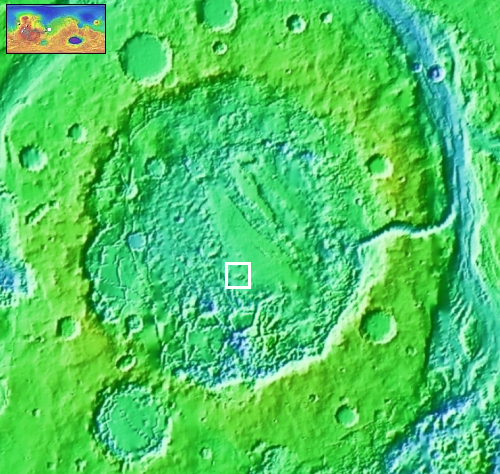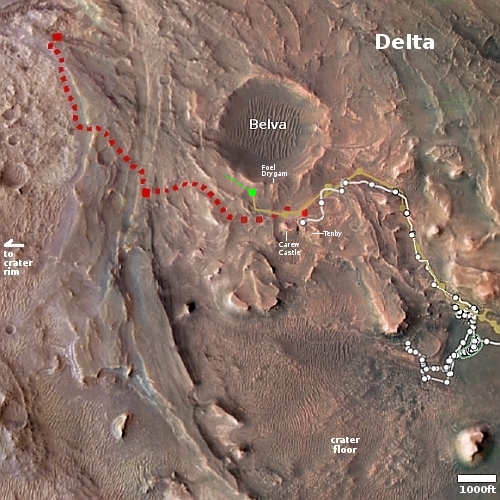Exploring just one small corner of Valles Marineris, Mars’ Grand Canyon
Cool image time! The picture to the right, rotated, cropped, reduced, and sharpened to post here, was taken on February 19, 2023 by the high resolution camera on Mars Reconnaissance Orbiter (MRO). It shows the many many many layers that are found in the cliffs of Valles Marineris, the largest known canyon in the solar system and far far larger that Earth’s Grand Canyon.
The elevation difference between the red dots is just under 4,000 feet. Yet that high point is still more than 7,000 feet below the rim of the canyon, more than thirty miles to the south. And the lower dot is still about 18,000 feet above the low point in this side canyon of Valles Marineris, about thirty miles away to the northeast.
In other words, in sixty miles from rim to floor the canyon at this location drops about 25,000 feet, only 4,000 feet less than the height of Mount Everest. Compare that with the Grand Canyon’s slopes, which drops in eleven miles about 5,000 feet, beginning at the main south rim lookout at the start of Bright Angel trail.
» Read more
Cool image time! The picture to the right, rotated, cropped, reduced, and sharpened to post here, was taken on February 19, 2023 by the high resolution camera on Mars Reconnaissance Orbiter (MRO). It shows the many many many layers that are found in the cliffs of Valles Marineris, the largest known canyon in the solar system and far far larger that Earth’s Grand Canyon.
The elevation difference between the red dots is just under 4,000 feet. Yet that high point is still more than 7,000 feet below the rim of the canyon, more than thirty miles to the south. And the lower dot is still about 18,000 feet above the low point in this side canyon of Valles Marineris, about thirty miles away to the northeast.
In other words, in sixty miles from rim to floor the canyon at this location drops about 25,000 feet, only 4,000 feet less than the height of Mount Everest. Compare that with the Grand Canyon’s slopes, which drops in eleven miles about 5,000 feet, beginning at the main south rim lookout at the start of Bright Angel trail.
» Read more

